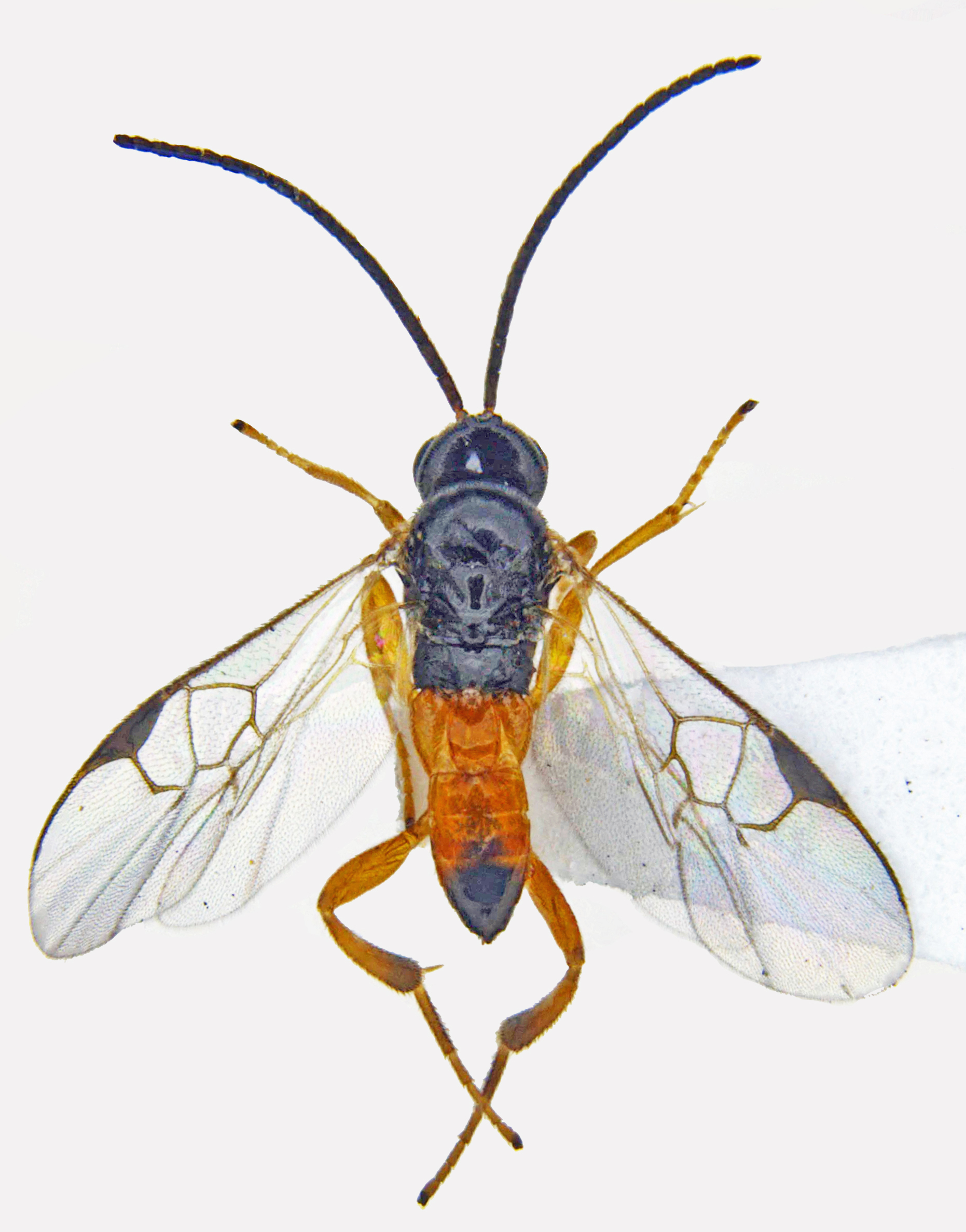Distatrix papilionis (Viereck, 1912)
Images

Taxonomic placement
Hymenoptera: Braconidae: Microgastrinae
Synonyms/Original combination
Apanteles papilionis Viereck, 1912
Apanteles agamemnonis Wilkinson, 1928
Brief diagnosis
Female: Body length – 3 mm. Head and mesosoma black. Antenna 18 segmented; apex of scape and flagellum dark brown to black; flagellomeres with placode sensillae arranged in two ranks giving appearance of false division within a flagellomere. First and second metasomal tergites stramineous or yellowish brown; third and succeeding tergites dark brown. Apical fourth of hind tibia, hind tarsi, tegula and costal vein brownish. Mesosoma punctate anteriorly. Mesosoma and scutellum setose. Propodeum smooth and shiny. Second metasomal tergite divergent anteriorly.
Geographical distribution
India, China, Indonesia, Malaysia & Myanmar.